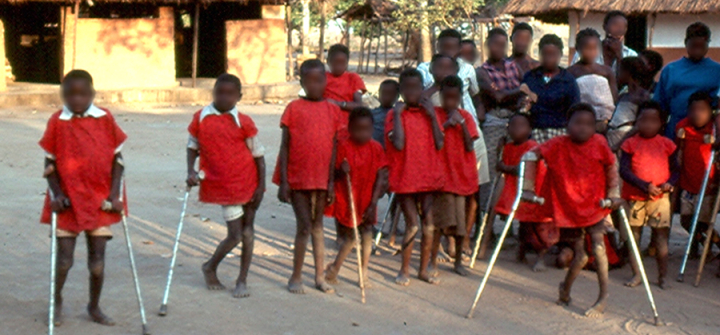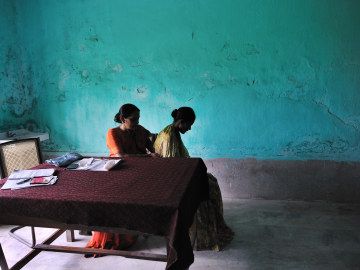Julie Cliff on Konzo, the Orphan Disease
Konzo has afflicted other communities where cassava is a staple, such as Mozambique. In her chapter about konzo in The Practice of International Health: A Case-Based Orientation, physician Julie Cliff writes, “The study of konzo has been my greatest professional success—meticulously documented and written up in scientific journals. But it has also been my greatest failure, because it still exists.” In a Q&A with GHN’s Dayna Kerecman Myers, she explains her work to help identify konzo as the source of the mysterious paralysis cases she saw in Mozambique beginning in the early 1980s, how she watched as konzo affected communities through times of war and drought—and how the answers to curbing konzo, inextricably intertwined with fighting poverty, remain frustratingly elusive.
It’s fascinating that early on in your disease detective work, when the cause appeared likely to be infectious, an elderly man in an afflicted village blamed cassava. Can you tell us more about his input, and how he knew there was a connection? Did you have a chance to go back and tell him that his instincts were right?
The elderly man said: “This disease has happened because the rain has not washed our cassava. The leaves have not developed.” He may have suspected the connection because people were also frequently suffering symptoms of acute poisoning after eating cassava. We didn’t have a chance to go back and tell him personally that his instincts were right.
When you first began studying the konzo epidemic in Mozambique in the 1980s, mostly women and children were afflicted—in part because their diets were not as diverse as men’s diet. Has that been true in subsequent outbreaks, as in DRC, or was that unique to the communities you visited in Mozambique?
This has been true in subsequent outbreaks – mostly women of reproductive age and children above two years of age are afflicted by konzo. Younger children are protected by breastfeeding.
At the time, locals believed raw cassava helped stimulate lactation for nursing mothers. Have subsequent efforts to curb outbreaks addressed these misconceptions, or do they persist?
This belief persists, but has not featured as a key message in prevention efforts. These efforts have focused more on improving processing methods to lower cyanogen levels in cassava products such as flour that form the bulk of the diet. Recently, Esther Agbor, a Cameroonian scientist, drew attention to the problem of eating raw cassava. It merits more attention.
You wrote that you believe the ultimate answer is in rural development, and that the consumption of bitter cassava is likely to continue to grow if current economic and agricultural policies are maintained. Has there been any progress on that front, or are any food policy organizations working with governments toward changes?
Apart from some attempts to diversify non-staple crops, here has been little progress in supporting the extremely poor rural farmers in konzo-affected areas who are dependent on bitter cassava as their main staple. These areas are ignored in most development efforts. Cassava cultivation is increasing – a bulwark against hunger in Africa. With the numbers of poor also increasing, and no fall in inequality, konzo is likely to continue to afflict poor rural populations. Cases were reported for the first time in Zambia last year.
Changing deeply ingrained food preparation methods is a huge challenge. What will it take to persuade people to adopt “wetting method”? Have governments or organizations been successful in promoting it?
The “wetting method” has so far been successfully promoted, with prevention of konzo, in 16 villages in the DRC, with a total population over 10,000. A local champion, Professor Jean Pierre Banea of the National Nutrition Program, has been key to the success. He works in partnership with Dr Howard Bradbury of the Australian National University, who invented the method. Konzo was previously common in these villages, which probably provided an incentive for the population to adopt the method.
You wrote of the difficulty of communicating the urgent need to act on konzo to people who have never seen it up close. What is the most important thing that people who live far away from this problem can do to help?
Put eliminating konzo on the global development agenda, advocate for economic policies to end extreme poverty and inequality, and agricultural policies to promote food-based dietary diversity.
Join the thousands of subscribers who rely on Global Health NOW summaries and exclusive articles for the latest public health news. Sign up for our free weekday enewsletter, and please share the link with friends and colleagues: Subscribe to GHN





